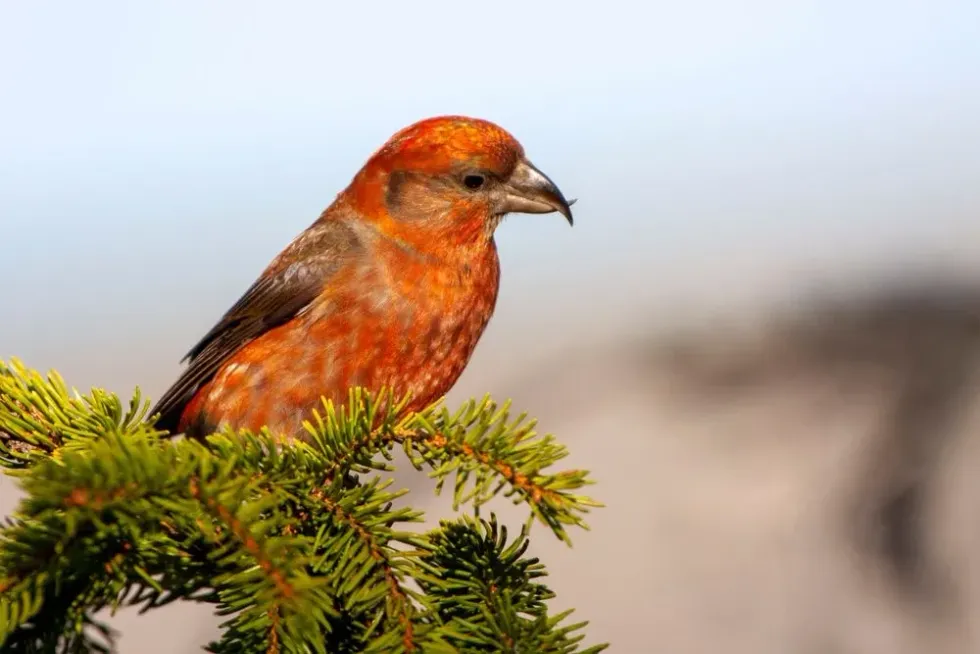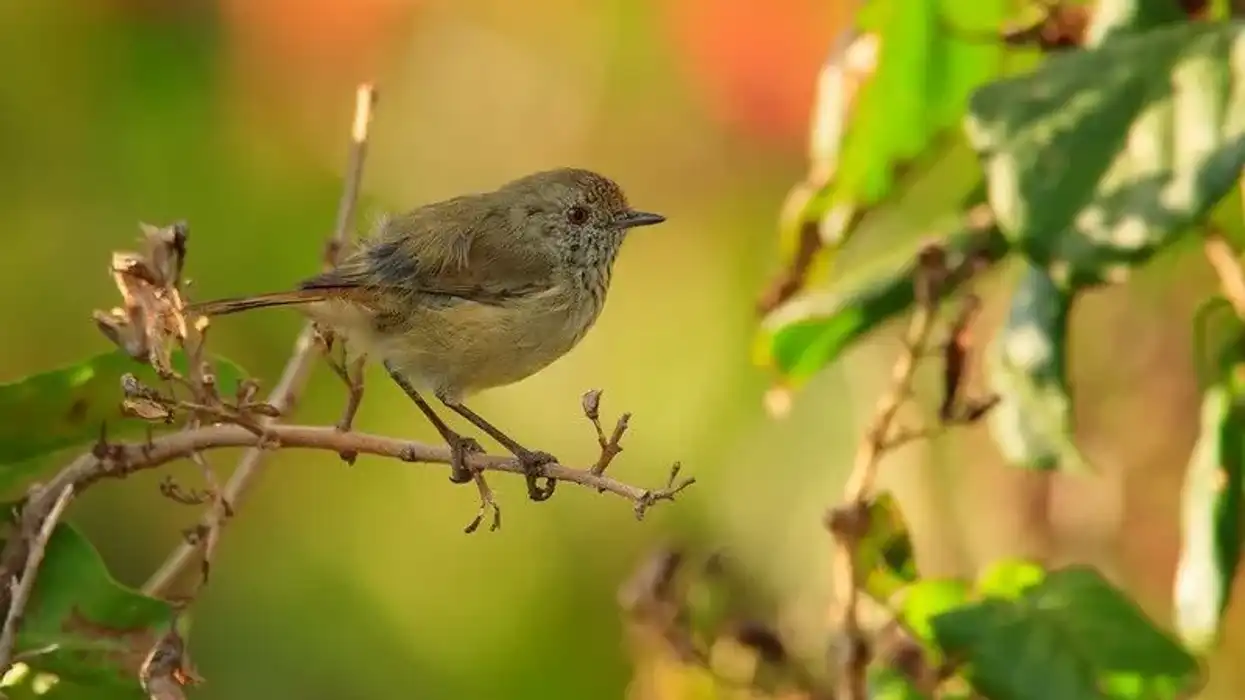The red crossbill (Loxia curvirostra), belonging to the family of Fringillidae, is an exclusive species of birds common to many places across America, Europe, and Asia. These birds are famously regarded as common crossbills in European countries while North America hails them as red crossbills.
The distinguishing feature of red crossbills is that they possess crossed bills that aid them in feeding on conifer seeds.
North American red crossbills are very sociable and they move in flocks. These birds do not engage in migration but they do fly and hover around from place to place, except in their breeding season.
A large flock of red crossbills can be seen during fall when the conifers become ripe and the discovery of a new territory by the nomadic flock often results in the marking and formation of new territories. The population of the species is considered stable as their numbers are growing steadily.
If you enjoyed these intriguing facts about the North American red crossbill, then you can also explore some fun-filled facts about other bird species like the ostrich and the cardinal bird.
Red Crossbill Interesting Facts
What type of animal is a red crossbill?
A red crossbill is a species of bird.
What class of animal does a red crossbill belong to?
The red crossbill belongs to the class of Aves.
How many red crossbills are there in the world?
An approximate evaluation by the International Union for Conservation of Nature (IUCN) records the number of adult red crossbills at 90,000,000-179,999,999. In North America, the population trend is quite steady while in European countries their population is uncertain due to frequent fluctuations. However, despite this, these birds are quite abundant in numbers.
Where does a red crossbill live?
Red crossbills can be traced in innumerable forested regions throughout the world. Some of these places include Algeria, Austria, Bulgaria, Belgium, Finland, France, Germany, Greece, Korea, the United Kingdom, Hungary, Guatemala, Croatia, Denmark, Portugal, Spain, Mexico, Nicaragua, Morocco, Sweden, Italy, Ireland, and more.
What is a red crossbill's habitat?
The habitat of a red crossbill normally includes the forest canopy and woodlands. Their habitat mainly comprises conifer forests that are abundant in deciduous trees where they can easily find conifers to feed on.
Who do red crossbills live with?
Red crossbills live in large to small flocks with other red crossbill birds. They move in large groups to forage food from cone crops.
How long does a red crossbill live?
Red crossbills can live up to the age of eight years in the wilderness.
How do they reproduce?
The species is known to be monogamous and the breeding period for these birds spans throughout the year. However, breeding largely depends on seasonal changes and the availability of food.
Males engage in courtship to form a bond with females and, after breeding, the male sticks with the female helping her to gather nesting materials during the entire nesting period. However, it is the females who build the nest and incubate the eggs for an incubation period of 12 to 16 days.
Before this, they lay one egg each day (for three to four consecutive days).
Red crossbills are capable of raising two broods during one nesting period and, after the arrival of the hatchlings, the young birds are dependent on their parents. Hatchlings take around 33 days to mature enough to be able to feed themselves, until which point, the parent birds feed their young.
What is their conservation status?
According to the IUCN Red List, the red crossbill has been categorized as a species of bird that is of Least Concern. These birds are not vulnerable or rare and, at present, they exist in abundance.
Red Crossbill Fun Facts
What do red crossbills look like?
Red crossbills are medium-sized birds. The primary color of males is red or reddish-yellow with dark black wings while females are greenish-yellow. A male red crossbill is normally perceived to be more beautiful than its female counterpart. Black wings and crossed mandibles are common to both genders.
How cute are they?
The bright and colorful appearance of red crossbills makes them extremely appealing to the eyes. Although these birds possess a more elegant and majestic look, they can still be described as cute!
How do they communicate?
Red crossbills use different types of calls to communicate with their flock members. Sounds like 'choowp-choowp', 'pip-pip-pip', 'chewt-chewt-chewt', 'tik-tik', 'plick-plick', or even 'cheep-cheep' can be heard and every flight call bears a special connotation. For instance, the flight call of an enigmatic crossbill is a 'jit-jit' sound. Generally, males give out a melodious and soft sound.
How big is a red crossbill?
A red crossbill stands at a height of about 5.5-7.9 in (14-20 cm). These birds are larger than hummingbirds and the mourning dove, but they are much smaller than the Dalmatian pelican.
How high can a red crossbill fly?
Red crossbills can fly up to heights of 13,451 ft (4.1 km) while their lower elevation limit is 2,625 ft (0.8 km).
How much does a red crossbill weigh?
On average the weight of a red crossbill ranges between 0.8-1.6 oz (23.7-45.4 g).
What are the male and female names of the species?
Male and female members of the species have no specific names, they are simply called a male red crossbill and a female red crossbill.
What would you call a baby red crossbill?
Similar to the name of any other baby bird, a baby red crossbill is known as a hatchling or nestling.
What do they eat?
Red crossbills are herbivorous. Their diet mainly comprises nuts and seeds, especially from conifer trees.
The unique crossed bill of these birds helps them to extract seeds and nuts. Red crossbills show expertise in obtaining conifer seeds from cones by holding onto the cone with one foot and slightly inserting their bill into the cone, followed by closing their bill to expose the seed within.
Then, with the collaborative support of their bills, they remove the seeds with their tongues, and then, the birds feed on them.
The entire process of breaking up the conifer cones carefully and feeding on the conifer seeds is carried out with a lot of meticulousness.
They gather their food from different types of trees and some of the preferred tree species include ponderosa pine, eastern hemlock, western hemlock, western larch, lodgepole pine, Sitka spruce, red pine, Douglas fir, and white spruce trees.
What shape are a red crossbill's feet?
The feet that red crossbills use to feed themselves (by holding onto the food and bringing them to their mouth) have four toes each. The first three toes are forward-pointing and the hind toe is primarily used for perching.
Each toe comes with a sharp and pointed talon at the end. This unique shape of their feet not only aids in climbing and perching on trees but also in feeding.
Did you know...
Red crossbills belong to the family of finches.
There are 10 species of the North American red crossbill and each is distinguished on account of its flight calls among other factors. Each species of the red crossbill specializes in a specific type of cone. For instance, small-billed crossbills found in Northern America prefer western hemlock trees which have small-sized cones.
The crossed tip of this bird's bill is used to widen the gap between the scales of a cone to reveal the seed inside.
There are 10 species of red crossbills in North America. Distinctions can be made concerning their flight calls, appearance, area of habitation, and cone specialization.
How and where does a red crossbill build its nest?
Their nests are built by female birds by using conifer needles, grasses, lichens, feathers, twigs, and other materials from the forest. These nests are not built within woodlands but in areas surrounded by dense foliage, mostly near a tree trunk.
How did the red crossbill get its name?
As their name suggests, this species derived its name based on its physical attribute, that is, its crossed mandibles and its primary body color. The crossed mandibles separate these birds from the other species.
Here at Kidadl, we have carefully created lots of interesting family-friendly animal facts for everyone to discover! Learn more about some other birds including the mockingbird or the peacock.
You can even occupy yourself at home by drawing one on our Red Crossbill coloring pages.










